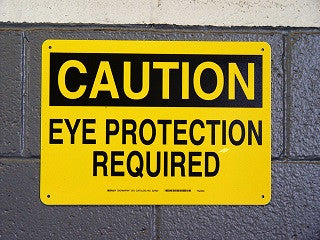
Air Purification : Chemical Testing
Share
New law requires EPA to assess substances for health and environmental risks
America’s Toxic Substances Control Act was put into place in 1976 and remained unchanged for decades, even when countless new chemicals flooded the marketplace and profoundly changed the chemical environment.
 In reality, the EPA couldn’t do much to regulate the chemicals that were being introduced to the public. When the TSCA was enacted, it grandfathered in thousands of unevaluated chemicals that were in commerce at the time.
In reality, the EPA couldn’t do much to regulate the chemicals that were being introduced to the public. When the TSCA was enacted, it grandfathered in thousands of unevaluated chemicals that were in commerce at the time.
Under the old law the EPA was unable to evaluate chemicals and to require companies to generate and provide data on chemicals they produced.
In theory, the TSCA provides EPA with the “authority to require reporting, record-keeping and testing requirements, and restrictions relating to chemical substances and/or mixtures.” This does not include substances such as food, drugs, cosmetics and pesticides.
Finally, this past June, former US President Obama signed the Frank R. Lautenberg Chemical Safety for the 21st Century Act, which modernizes the Toxic Substances Control Act. It was a much-needed update to a seriously outdated piece of legislation and it has already spurred some action. The EPA has come up with a work plan that lists 90 chemicals to be reviewed.
Barring any major changes due to a new political atmosphere, here is what should happen next:
Official evaluation of certain chemicals
The EPA has a working plan with 90 different chemicals that need a review. The agency recently announced which 10 chemicals it will study first for their effects on human health and the environment:
- 1,4-Dioxane - a solvent that is used in the manufacture of other chemicals or in laboratories (possible carcinogen)
- 1-Bromopropane - a solvent used in degreasing, dry cleaning, spray adhesives, and aerosol solvents (possible carcinogen)
- Asbestos - a naturally occurring mineral that once was used widely for heat resistance, tensile strength and insulating properties (known human carcinogen)
- Carbon Tetrachloride - a solvent for oils and fats, as a refrigerant and as a dry-cleaning agent (possible carcinogen)
- Cyclic Aliphatic Bromide Cluster - a flame retardant (aquatic toxicity)
- Methylene Chloride - an industrial solvent used in paint stripping, pharmaceutical manufacturing, paint remover manufacturing, and metal cleaning and degreasing, among others (probable carcinogen)
- N-methylpyrrolidone - solvent often used in adhesives and sealants, many other industrial uses (reproductive toxicity)
- Pigment Violet 29 - organic compounds used as dark red pigment or dye (aquatic toxicity)
- Tetrachloroethylene, also known as perchloroethylene - solvent in the dry-cleaning and metal-cleaning industries (probable human carcinogen)
- Trichloroethylene - industrial solvent mainly used for cleaning metal parts (probable human carcinogen)
The law states that a risk assessment should be done within three years. If a chemical is deemed a risk to human health, mitigation should follow within the two following years.
After a risk evaluation is done, the law requires that EPA starts working on another assessment, gradually increasing the amount of risk evaluations over time.
By the end of 2019, the EPA should be working on 20 chemical evaluations at a time. The results of each risk assessment could potentially lead to new rules, phase-outs or stricter controls that may affect a wide range of industries.
Here’s to a healthier and safer environment at work and at home!



